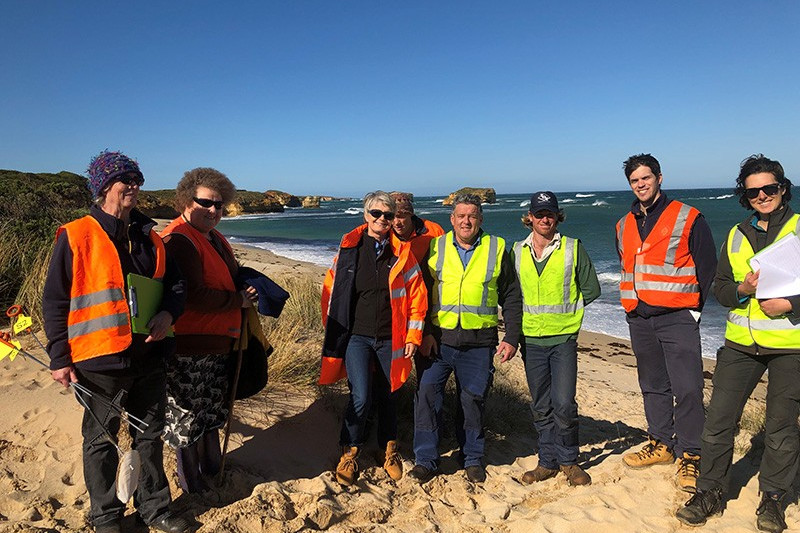General News
23 July, 2019
Coast wattle spread to be mapped
A COMMUNITY-BASED project focussing on the mapping and control of coast wattle in the Bay of Islands Coastal Park started this week.

A COMMUNITY-BASED project focussing on the mapping and control of coast wattle in the Bay of Islands Coastal Park started this week.
The spread of coast wattle has been listed as a threatening process under the Flora and Fauna Guarantee Act 1988.
In recent years, Parks Victoria has been working on control programs as the invasive coast wattle has begun impacting on species such as the metallic sun orchid.
Beach Energy community relations manager Linda French said she knew how concerned local community groups were about the invasive species.
“The Friends of Bay of Islands Coastal Park, other local volunteers and Parks Victoria have been working at this problem for a long time and Beach’s contribution aims to give them much needed additional resources to continue their fight,” she said.
With the backing of the partnership, Heytesbury District Landcare Network (HDLN) was able to secure additional funding from the Department of Environment, Land, Water and Planning (DELWP), and to link the coast wattle blitz with another nearby project – Protecting the Bay Wetlands.
The wetlands project aims to protect and restore valuable wetlands in the land adjoining the Bay of Islands National Park.
The wetlands are located on private land and consist of ephemeral and permanent wetlands in a wider area which provides a vital habitat for vulnerable species including Lewin’s rail and the hooded plover.
HDLN will lead both projects, working in partnership with Friends of Bay of Islands, Timboon Field Naturalists, Parks Victoria and supported by Beach Energy.
HDLN Landcare co-ordinator Geoff Rollinson said volunteers, landholders and staff from these organisations will assist in undertaking fencing, revegetation, monitoring and educational activities.
He said he was confident the project activities would build resilience in the landscape with increased species biodiversity, enhanced habitat and would help reduce the impacts of increasing tourism.
“We’re expecting some of the long-term outcomes will include improved wetlands and increased habitat for the many flora and fauna species that are in some cases vulnerable and in all cases a vital part of this fragile and diverse landscape,” Mr Rollinson said.